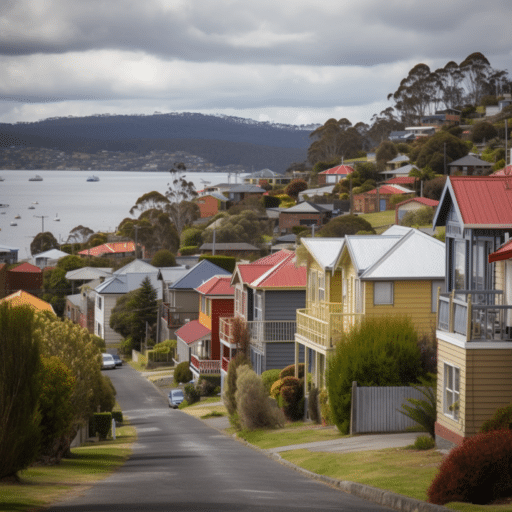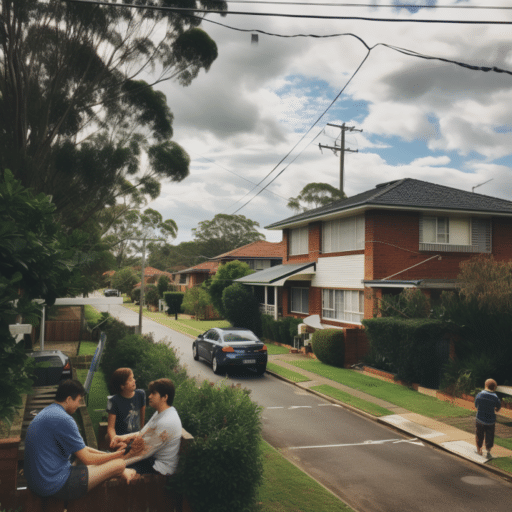Searching for a dream home in rural areas in Australia? Perhaps you’re yearning for a peaceful countryside retreat away from the hustle and bustle of city life. If affordability is a top priority, knowing the cheapest rural areas to buy a house in Australia becomes crucial.
In this blog, we invite you to embark on a journey to explore the hidden gems of affordable rural real estate in the Land Down Under.
From picturesque countryside towns to idyllic outback regions, we’ll unveil the best-value destinations that offer the perfect blend of tranquility, charm, and affordability.
If you want to invest as an expat or high-net-worth individual, which is what I specialize in, you can email me (advice@adamfayed.com) or use WhatsApp (+44-7393-450-837).
Table of Contents
What factors should I consider when looking for affordable rural areas to buy a house in Australia?
When searching for affordable rural areas to buy a house in a, several factors should be considered. These factors can help you evaluate the potential of a particular location and make an informed decision. Here are some key factors to consider:
Property Prices
Compare property prices in different rural areas to find affordable options within your budget. Research recent property sales data, trends, and the average price range in the areas you are interested in.
Location and Accessibility
Consider the location’s proximity to essential amenities and services such as schools, healthcare facilities, shopping centers, and public transportation. Evaluate the accessibility of the area to major cities or employment hubs, as well as the quality of local infrastructure like roads and utilities.
Employment Opportunities
Assess the availability of jobs and employment opportunities in the area or nearby towns. Consider the local industries, job market trends, and the potential for future growth or diversification in employment sectors.
Amenities and Services
Research the availability of essential amenities and services such as grocery stores, banks, post offices, recreational facilities, and community services. Assess the quality and proximity of these amenities to ensure a convenient and comfortable lifestyle.
Infrastructure Development
Investigate any planned or ongoing infrastructure developments in the area, such as road expansions, new schools, or upgrades to utilities. These developments can indicate potential growth and increased property values in the future.
Community and Lifestyle
Explore the community atmosphere and lifestyle of the rural area. Consider factors like the local culture, community activities, recreational opportunities (e.g., parks, trails, sports facilities), and any unique features or attractions that contribute to the area’s appeal.
Future Potential
Look for signs of potential growth, investment, or development in the area. Consider factors such as population trends, local government initiatives, tourism prospects, or any planned projects that may positively impact property values and the overall desirability of the location.
Local Regulations and Zoning
Familiarize yourself with local regulations, zoning laws, and planning restrictions that may affect property use, development potential, or other considerations specific to rural areas.
Natural Surroundings and Environment
Evaluate the natural surroundings and environment of the area. Consider factors like scenic landscapes, proximity to parks, forests, or bodies of water, and any environmental features that contribute to the overall appeal of the location.
Property Condition and Potential Renovations
Assess the condition of properties available in the area and consider the potential for renovations or improvements. Determine if there are affordable properties that require cosmetic updates or minor repairs, which can offer cost-saving opportunities.

Various rural areas in Tasmania, such as the Huon Valley, West Coast, and the Midlands, often have more affordable housing compared to other parts of the country.
What are the cheapest rural areas to buy a house in Australia?
Determining the absolute cheapest rural areas to buy a house in Australia can be challenging, as property prices can vary depending on several factors, including location, market conditions, and property types.
However, there are some regions known for offering more affordable housing options in rural areas. Here are a few examples:
Tasmania
Various rural areas in Tasmania, such as the Huon Valley, West Coast, and the Midlands, often have more affordable housing compared to other parts of the country.
South Australia
Regions like the Eyre Peninsula, Riverland, and the Clare Valley in South Australia are known for relatively affordable housing options in rural settings.
Queensland
Certain rural areas in Queensland, such as the Darling Downs, Wide Bay-Burnett region, and parts of the Atherton Tablelands, offer affordable housing options.
New South Wales
While generally considered more expensive, some rural areas in New South Wales, like the Riverina, Central West, and parts of the Northern Rivers, may offer more affordable housing opportunities.
Victoria
Certain rural areas in Victoria, including the Mallee region, Gippsland, and parts of the Western District, can provide more affordable housing options.
Western Australia
Rural areas in Western Australia, such as the Wheatbelt region, Great Southern, and parts of the Kimberley, may offer relatively affordable housing opportunities.
Northern Territory
Some rural areas in the Northern Territory, like Katherine, Tennant Creek, and parts of the Top End, may have more affordable housing options compared to major cities like Darwin.
What amenities and services can I expect in these affordable rural areas?
The amenities and services available in affordable rural areas in Australia can vary depending on the specific region and its proximity to urban centers.
While rural areas may generally have fewer amenities compared to larger cities, they still offer essential services and facilities to support residents’ daily needs. Here are some common amenities and services you can expect to find:
Grocery Stores and Markets
Rural areas typically have grocery stores, supermarkets, and local markets where you can purchase essential food items and groceries. These establishments may be smaller in size compared to urban supermarkets but can cater to basic food requirements.
Healthcare Facilities
Rural areas usually have medical clinics, general practitioners, and community health centers that provide primary healthcare services. While specialized medical facilities may be limited, rural areas often have access to essential healthcare services, including doctors, nurses, and pharmacies.
Schools and Educational Institutions
Rural areas have primary schools, high schools, and sometimes even tertiary educational institutions. These institutions provide education for children and teenagers, ensuring access to quality education within the local community.
Post Office and Banking Services
Most rural areas have post offices that offer postal services, including mail and parcel delivery. Banking services are also available through local branches or agents, providing basic banking facilities and access to ATMs.
Recreational Facilities
Rural areas often offer recreational facilities such as parks, sports fields, community centers, and swimming pools. These spaces promote community engagement and provide opportunities for leisure activities, sports, and social gatherings.
Public Transportation
While public transportation options may be limited compared to urban areas, rural areas typically have bus services or regional transportation networks connecting them to nearby towns or cities. These services enable residents to commute and access essential services in nearby areas.
Libraries and Cultural Centers
Many rural areas have public libraries that offer access to books, resources, and educational programs. Cultural centers and local museums may also be present, showcasing the region’s history, art, and cultural heritage.
Retail and Dining Options
Rural areas often have local shops, cafes, restaurants, and small businesses catering to residents’ retail and dining needs. These establishments provide opportunities to support local businesses and enjoy local produce or cuisine.
Emergency Services
Rural areas have emergency services such as police stations, fire stations, and ambulance services to ensure the safety and well-being of residents. However, emergency response times may vary due to the distance from major centers.
How does the cost of living in rural areas compare to urban areas in Australia?
The cost of living in rural areas of Australia generally tends to be lower compared to living in urban areas.
However, it’s important to note that the cost of living can still vary depending on the specific location within each category. Here are some factors to consider when comparing the cost of living in rural and urban areas:
Housing Costs
Housing costs in rural areas are often more affordable compared to urban areas. Property prices, both for purchasing and renting, tend to be lower in rural areas, allowing for potentially more spacious and affordable housing options.
Transportation
Rural areas may have lower transportation costs compared to urban areas. Fuel prices and commuting distances are generally lower in rural regions, but access to public transportation options may be more limited.
Utilities
Utility costs, such as electricity, water, and internet services, are usually comparable between rural and urban areas. However, connection fees and infrastructure maintenance costs can vary depending on the remoteness of the rural area.
Food and Groceries
The cost of groceries and food items can be slightly higher in rural areas due to factors like transportation costs for goods and limited competition among suppliers. However, local produce and seasonal items may be more affordable and readily available in rural areas.
Healthcare
Healthcare costs in rural areas can be influenced by the availability of medical services and facilities. While primary healthcare services may be more accessible, specialized care and certain medical treatments may require travel to urban centers, potentially incurring additional costs.
Education
Public education costs, such as school fees, are generally consistent across rural and urban areas. However, rural areas may have limited options for private or specialized education, which could impact choices and costs for families seeking specific educational opportunities.
Entertainment and Lifestyle
The cost of entertainment and lifestyle activities can vary depending on personal preferences and the specific amenities available in the area. Rural areas may have fewer options for entertainment, dining, and cultural events, but outdoor activities and natural attractions may be more accessible and affordable.

The cost of groceries and food items can be slightly higher in rural areas due to factors like transportation costs for goods and limited competition among suppliers.
Are there any potential challenges or drawbacks of buying a house in a rural area?
Yes, there can be potential challenges or drawbacks to buying a house in a rural area. It’s important to consider these factors before making a decision. Here are some common challenges:
Limited Amenities and Services
Rural areas typically have fewer amenities and services compared to urban areas. Access to healthcare facilities, educational institutions, shopping centers, and entertainment options may be more limited or require travel to nearby towns or cities.
Employment Opportunities
Rural areas often have fewer employment opportunities, particularly in specialized industries. This can make it challenging to find suitable jobs, especially if you have specific career requirements or are reliant on a particular industry.
Transportation and Distance
Rural areas are often more remote, which means longer travel distances and potentially limited public transportation options. This can impact commuting times, access to services, and the convenience of traveling to urban areas.
Social Isolation
Living in a rural area can lead to social isolation, especially if there is a smaller local community or limited social activities. It may take time to build a social network, and maintaining connections with friends and family in urban areas could require more effort.
Limited Market for Resale
The resale market for houses in rural areas may be smaller and more restricted compared to urban areas. It can take longer to find buyers if you decide to sell your property, and property values may appreciate at a slower rate.
Internet and Infrastructure
Rural areas may have limited access to high-speed internet and other essential infrastructure, which can impact connectivity and access to online services. Additionally, power outages and maintenance issues may take longer to resolve in remote areas.
Maintenance and Services
Some rural areas may have limited availability of tradespeople and specialized services, making it more challenging to find contractors for repairs or renovations. It may take longer for service providers to reach rural locations, potentially leading to delays.
Natural Risks
Depending on the location, rural areas may be more exposed to natural risks such as bushfires, floods, or extreme weather conditions. It’s important to consider the potential risks and take appropriate measures to mitigate them.
What is the average price range for properties in these affordable rural areas?
The average price range for properties in affordable rural areas in Australia can vary significantly depending on the specific region, location, property type, and market conditions.
However, as a general guideline, affordable rural properties often fall within the lower to mid-range price brackets compared to urban areas. It’s important to note that these ranges are approximate and can fluctuate over time. Here’s an overview of the average price range for properties in affordable rural areas:
Houses
In many affordable rural areas, the price range for houses can start from around AUD 150,000 to AUD 400,000 or higher, depending on factors such as location, size, condition, and land size. Some regions may have more expensive properties, while others may offer opportunities for lower-priced houses.
Land
If you’re looking to purchase land in affordable rural areas, prices can vary depending on factors like size, location, accessibility, and zoning regulations. Land prices can range from around AUD 30,000 for smaller plots or more remote locations, to several hundred thousand dollars for larger parcels or those closer to amenities.
Acreages and Farms
Acreages and farm properties in affordable rural areas can vary significantly in price based on factors such as land size, infrastructure, water availability, and agricultural suitability. Prices for smaller acreages may start from around AUD 200,000 to AUD 500,000, while larger farming properties can range from several hundred thousand dollars to millions of dollars, depending on the scale and productivity of the land.
Are there any government initiatives or programs that support rural property buyers in Australia?
Yes, the Australian government offers various initiatives and programs to support rural property buyers. These initiatives aim to encourage investment, stimulate regional development, and provide assistance to individuals or businesses interested in purchasing property in rural areas. Here are some notable government initiatives and programs:
Regional Development Australia (RDA) Program
The RDA Program supports economic development and growth in Australia’s regions. It provides funding, resources, and advice to businesses, organizations, and communities in rural areas, helping to create employment opportunities and enhance regional infrastructure.
First Home Owner Grant (FHOG)
The FHOG is a nationwide program that provides a grant to first-time homebuyers, including those purchasing property in rural areas. The grant amount and eligibility criteria may vary between states and territories, so it’s important to check the specific requirements in the region you’re interested in.
HomeBuilder Grant
The HomeBuilder Grant is a temporary initiative introduced by the Australian government to stimulate the construction sector. While primarily focused on new builds or substantial renovations, the grant may be applicable to eligible rural property buyers who meet the program’s criteria.
Rural Finance Programs
Various rural finance programs are available to support agricultural businesses and rural communities. These programs provide financial assistance, loans, grants, and subsidies to support agricultural development, farm succession planning, and infrastructure improvements in rural areas.
Rural and Regional Enterprise Scholarships
The Rural and Regional Enterprise Scholarships program provides financial support to students from rural and regional areas pursuing tertiary education. The program assists with education costs and aims to increase access to higher education opportunities for individuals in rural communities.
Regional Investment Corporation (RIC)
The RIC is a government-owned organization that provides financial assistance to eligible farmers, primary producers, and agribusinesses. The RIC offers low-interest loans for various purposes, such as farm upgrades, drought resilience projects, and water infrastructure investments.
State and Territory Initiatives
In addition to national programs, individual states and territories may have their own initiatives to support rural property buyers. These can include grants, tax incentives, stamp duty concessions, and regional development schemes. It’s recommended to research the specific programs available in the state or territory you are interested in.

Conduct thorough research on the property market in the specific rural area you’re interested in.
What are some tips for navigating the buying process and securing a mortgage for a rural property in Australia?
Navigating the buying process and securing a mortgage for a rural property in Australia requires careful planning and consideration. Here are some tips to help you along the way:
Define Your Requirements
Clearly define your requirements for the rural property, including location, size, amenities, and any specific features you desire. This will help you narrow down your search and focus on properties that meet your needs.
Research Property Market
Conduct thorough research on the property market in the specific rural area you’re interested in. Understand the market trends, recent sales data, and property values to ensure you make an informed decision.
Engage with Local Real Estate Agents
Local real estate agents with expertise in rural properties can provide valuable insights and guidance throughout the buying process. Engage with agents who have experience in the specific region to access their knowledge and expertise.
Finance Pre-Approval
Before starting your property search, obtain pre-approval for a mortgage from a reputable lender. This will help you determine your budget, provide confidence to sellers, and expedite the buying process when you find the right property.
Work with Experienced Conveyancer or Solicitor
Engage the services of an experienced conveyancer or solicitor who specializes in rural property transactions. They will help navigate the legal aspects, conduct property searches, review contracts, and ensure a smooth transaction.
Property Inspection and Due Diligence
Arrange a thorough inspection of the property to assess its condition, boundaries, and any potential issues. Consider engaging professionals such as building inspectors, surveyors, or pest inspectors to obtain comprehensive reports.
Consider Rural-Specific Factors
Rural properties often have unique considerations, such as access to utilities, water sources, soil quality, and zoning regulations. Understand these factors and any potential restrictions or implications they may have for your property.
Seek Professional Advice
Consult with professionals such as agronomists, soil experts, or rural consultants, especially if you’re purchasing a property for agricultural purposes. Their expertise can help assess the suitability of the land for your intended use.
Evaluate Insurance Requirements
Rural properties may have specific insurance considerations, such as bushfire risk or flood-prone areas. Research insurance providers who specialize in rural properties and understand the coverage options available to protect your investment.
Negotiation and Contractual Considerations
Work closely with your conveyancer or solicitor to negotiate the purchase price, terms, and conditions of the contract. Consider including appropriate clauses to address any specific rural-related concerns or contingencies.
Monitor Financing Options
Explore various mortgage options and compare interest rates, fees, and repayment terms from different lenders. Consider engaging a mortgage broker who can help identify suitable loan products for your needs.
Understand Loan Security Requirements
Rural properties may have unique loan security requirements, such as additional assets or guarantors. Understand the lender’s criteria and ensure you meet the necessary conditions for securing the mortgage.
Pained by financial indecision? Want to invest with Adam?

Adam is an internationally recognised author on financial matters, with over 760.2 million answer views on Quora.com, a widely sold book on Amazon, and a contributor on Forbes.



